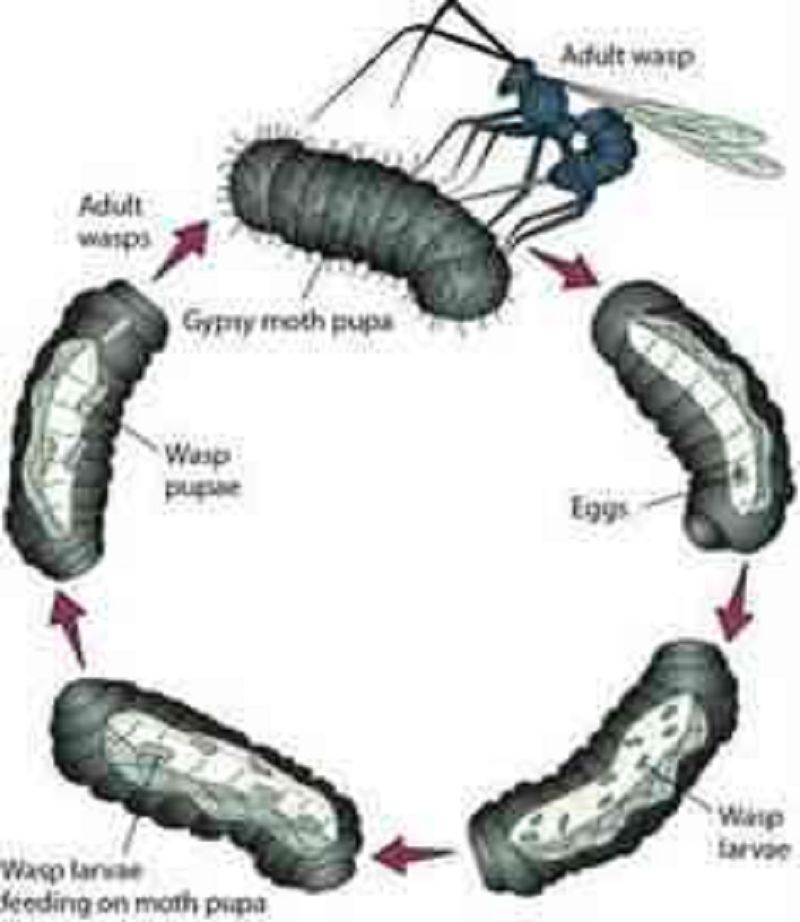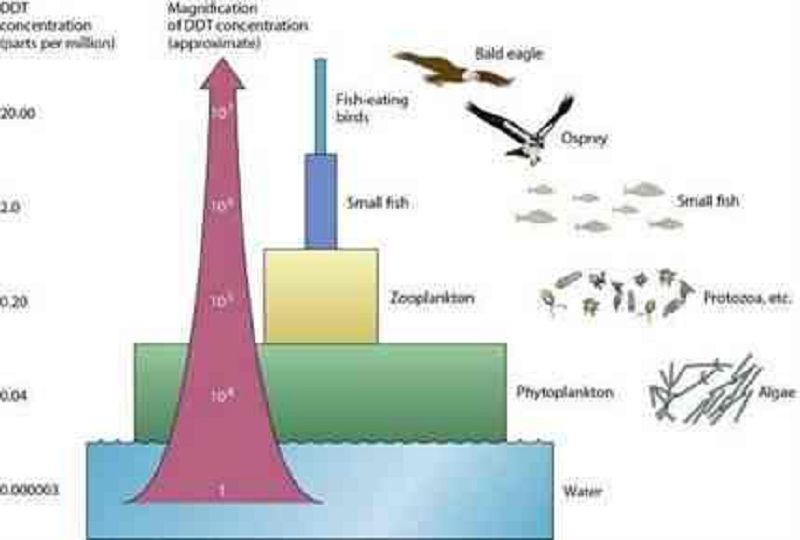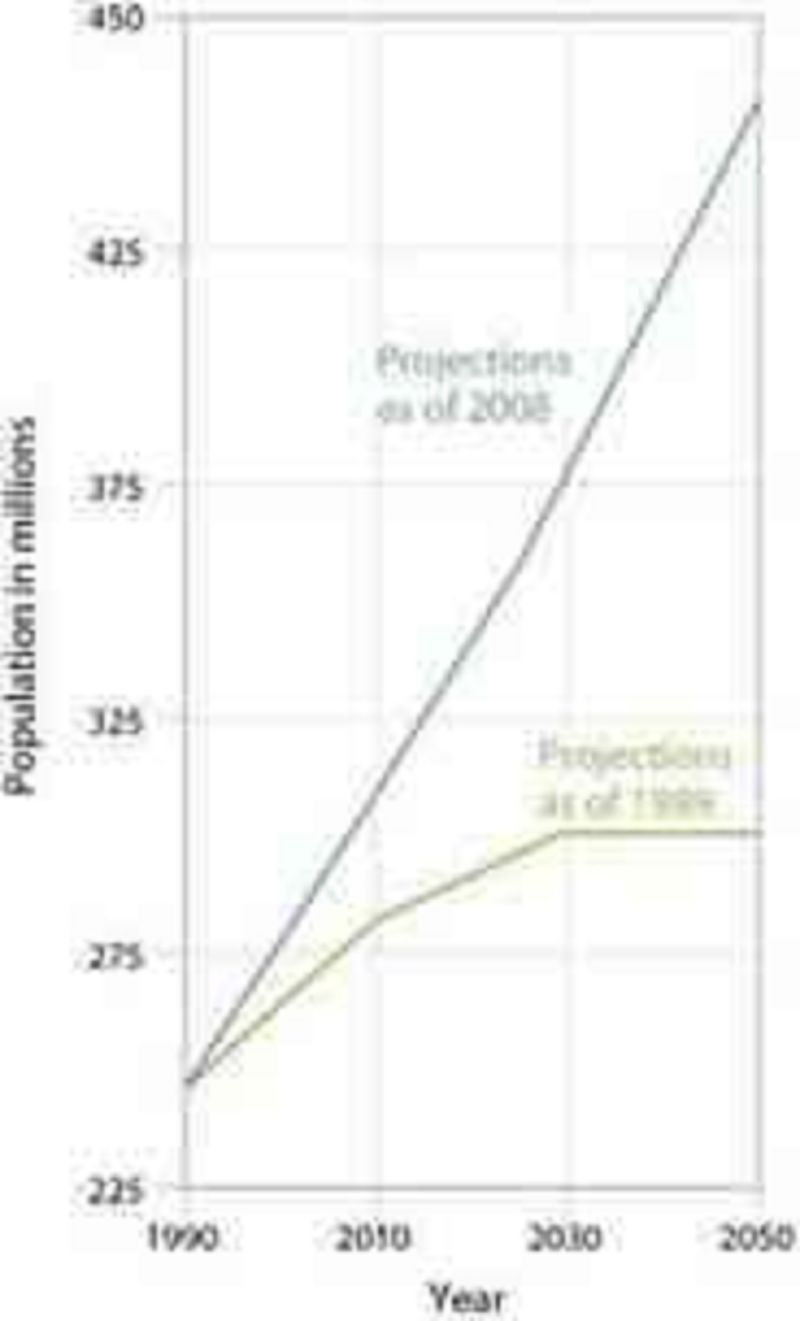ENSC FINAL 2
Planned Parenthood and the UNFPA are
international family planning agencies that do not operate within the United States.
agencies that advocate abortion and operate within the United States.
international agencies that provide broadly based family planning services in developing nations.
agencies that give broadly based assistance to clients within the United States.
Unlike developed countries, children in developing countries often die from
Unlike developed countries, children in developing countries often die from
common ailments such as diarrhea.
snakebite or large predators such as crocodiles and tigers.
hunting accidents.
India's improvements in food production and health care have
resulted in literacy rates above 80% for women.
resulted in most people employed in high-tech jobs in the cities.
brought India the levels of development equal to most industrialized countries.
been offset by tremendous growth in population size.
A study is conducted to understand how some developing countries have made social and economic progress. Which of the following would be a surprising finding in such a study?
a decline in extreme poverty
decreased fertility rates
decreased support of education
increased availability of clean drinking water
Increased availability of contraceptives in very poor nations is unlikely to decrease family size because
the increased use of industry and technology has already decreased family size.
infant and childhood mortality rates are already keeping family size low.
families depend upon children for labor and support when the parents become old.
poor families are already small because parents cannot afford to feed and house more than one or two children.

One major effort in developing countries is illustrated in the photo above. This is an effort to
teach foreign languages in schools.
emphasize environmental policy by moving classrooms outdoors.
encourage better nutrition by teaching children how to raise chickens.
increase the number of girls in schools.
Which of the following activities would be consistent with the Millennium Development Goals?
develop coal, gold, and silver mines wherever possible as quick sources of jobs
encourage the expansion of national militaries to provide income and technical training
help communities build technical and trade schools for boys to learn skills in high demand
provide meals and mosquito nets for every child under the age of five
China's one-child policy was adopted because
there were too few jobs and too many people.
the fertility rate was too low and the nation needed more people to populate vacant lands.
contagious disease was rampant in the 1970s and fewer people meant less contagion.
it was clear the nation could not live within the limit of its resources if the population continued to grow.
The poor, interested in starting a small business in a developing country, are most helped by
the availability of microloans from a new kind of bank.
the involvement of women in the new business, due to their reputation as good workers.
banks that provide large loans that permit the new business to establish a solid foundation.
insurance brokers who reassure the bank that the new business does not pose a credit risk.
Which of the following descriptions is most characteristic of the world's poorest people?
In a large city, a 12 year-old boy sits under a stack of tin he calls home, unable to read the nearby billboards.
Filling a pot with water from a community water reserve, a mother prepares to make a meal of rice and fish, barely enough to feed her husband and two children.
A thin man in his 80s, smoking a cigarette, makes his way to cast a ballot in a national election.
On her way to high school, a young girl walks along a path at the edge of a rice field.
Organizations in the United States that are opposed to abortion would most likely reduce the greatest number of abortions in the world by
helping to finance family planning clinics in developing countries.
protesting financial support to developing countries.
pressuring the US government to only support developing countries that have anti-abortion policies.
distributing brochures against abortion to women in the developing world.
Thailand's prospects for addressing current environmental problems are
very good because much less land is needed for agriculture.
worse because of the decline in population and decline in per capita income.
more hopeful because of slower population growth.
very good because air and water pollution have declined along with population growth.
If a plowed farm field was restored to natural prairie, we would expect that
erosion of the soil would decrease.
flooding would be more common in the related watershed.
more pollutants would flow into the watershed.
less water would be retained in the groundwater reservoir.

Compared to the windward side, the leeward side of this mountain range will most likely have
lower levels of sunshine.
lower levels of transpiration and precipitation.
higher levels of precipitation and lower levels of transpiration.
higher levels of humidity.
The impact of global warming on the water cycle is expected to produce
greater agricultural productivity in currently water-stressed regions.
fewer and less severe hurricanes.
more precipitation.
fewer droughts.
Dams typically
create important water reservoirs.
help stabilize estuarine ecosystems.
contribute to global warming and increase aerosol levels.
eliminate flooding both upstream and downstream.
Increasing the kinetic energy of liquid water enough to permit water molecules to break completely away from each other occurs as
rain forms.
ice freezes.
steam forms.
water flows in a stream.
Which of the following would we expect on the leeward sides of high mountain ranges?
deciduous forests
deserts
rainforests
Wetlands
All of the following are typically used in developing countries to address water shortages, except
controlling soil erosion.
importing food products from regions that have excess fresh water.
tilling the soil thoroughly and frequently before planting crops.
building small check dams to recharge aquifers.
The greatest threats to ground water supplies are
global warming and the construction of dams.
increased evaporation and increased precipitation.
evapotranspiration and runoff.
groundwater pollution and depletion.
Gutters and storm sewers in a city are most concerned with the
groundwater loop.
precipitation loop.
surface runoff loop.
evapotranspiration loop.
Which of the following are processes that generally reverse each other?
condensation and infiltration
precipitation and infiltration
evaporation and precipitation
transpiration and evaporation
A lawn based on the principle of xeriscaping
uses species that require no water other than natural precipitation.
includes agricultural crop species.
gets its water from redirected urban runoff.
uses at least twice as much water as necessary.
Floods are becoming more common primarily because
the "sponge effect" of forests releases large and unpredictable amounts of water.
precipitation has increased worldwide.
land use has changed, altering runoff, erosion and infiltration patterns.
populations are more concentrated in vulnerable watersheds.
One of China's current strategies to deal with its water shortage is to
develop the technology for seeding clouds to produce more rain.
illegally tap water resources of neighboring nations.
import more water intensive crops from the U.S., which has more water.
ask rural farmers to exploit and decontaminate deep underground aquifers.
When a plant does not get enough water and starts to wilt, it
opens its stomata, stops transpiration, and generates oxygen but not carbon dioxide.
closes its stomata, starts transpiration, and no longer brings in oxygen from the air.
opens its stomata, starts transpiration, and generates carbon dioxide but not oxygen.
closes its stomata, stops transpiration, and no longer brings in carbon dioxide from the air.
Adding humus in a garden will most likely
decrease the nutrients of the soil and the water-holding capacity.
increase the nutrients of the soil and the water-holding capacity.
decrease the nutrients of the soil but increase the water-holding capacity.
increase the nutrients of the soil but decrease the water-holding capacity.
Erosion can result in a vicious cycle of worsening erosion because
the accumulation of humus makes erosion more likely.
rainwater increasingly soaks into the ground.
the pH of the soil increases as erosion continues.
plants are less likely to grow in an eroded region.
Over the last one hundred years in the United States,
estimates and actual measurements indicate that soil erosion has decreased.
the increased reliance on plowing and technology has increased soil and wind erosion.
soil erosion has steadily increased while wind erosion has steadily decreased.
measurements of the amount of soil in major rivers indicate great increases in soil erosion.
Soils with the greatest water-holding capacity tend to have
poor aeration and lowest workability.
poor nutrient-holding capacity and good workability.
good aeration and poor workability.
good water infiltration and workability.
NGOs such as COSECHA in Central America
are sources for pesticides and chemical fertilizers to bring Green Revolution technologies to urban gardeners.
have increased erosion through misguided advice on soil conservation.
work with village landowners in the roles of "farmer experimenters" to develop local sustainable agricultural techniques.
help local farmers find international markets for their produce.
Where there is rapid decomposition of plant matter, we expect to find soils that have
a tremendous capacity to hold water.
high fertility and a very thick B horizon.
a very thin O horizon.
a particularly thick C horizon.
People most concerned about the side effects of bioengineering would more likely accept
food crops that have been engineered to produce vaccines.
crops produced by marker-assisted breeding.
food crops that are able to make their own pesticides.
transgenic crops that are more resistant to herbicides.
Where would you expect to find the cheapest meat in the world?
Asia
Central America
Africa
Europe and North America
Food safety issues of transgenic crops include
the ability to immunize people against pathogens by eating foods.
the promotion of antibiotic resistance in pathogens.
the development of herbicide resistance in humans.
a decreased production of allergens in crops.
War is most likely to contribute to famine
War is most likely to contribute to famine
where rice is the main source of food.
in coastal regions that make great use of seafood.
where food production and distribution is already problematic.
In the near future, the benefits of biofuel production may be enjoyed while reducing the impact on the global production of grain. One such promising approach is to
use the large amounts of animal wastes to produce ethanol.
produce biofuels from grasses and timber wastes instead of corn.
find ways to convert oil and natural gas into ethanol.
bioengineer cattle and goats to produce ethanol in their milk.
Cuba exemplifies a new direction in food production through
using polyculture farms.
Green Revolution high-yield grains.
urban agriculture.
programs to convert citizens to vegetarian diet.
The goals of biotechnology currently include
growing crops that are more resistant to drought and disease.
producing greater crop yields in plants that can grow without water.
altering plants to increase the production of coal.
creating plants that do not need sunlight to grow.
When a country such as the United States exports subsidized grains, it hurts a developing country importing the grain by
increasing domestic production of grains in the developing country.
increasing the demand for meat in the developing country.
causing more people to turn to subsistence farming in the developing country.
decreasing production of the grain in the developing country.
Pesticide resistance against one pesticide
can provide protection against herbivores.
often harms insects by decreasing their ability to reproduce.
can become resistance to many if many are used.
is permanently restricted to that one kind of pesticide.

The parasitic relationship illustrated in this figure represents a type of
natural enemies control.
genetic control.
cultural control.
natural chemical control.
First published in 1962, the book Silent Spring helped to establish
the modern civil rights movement.
the National Wildlife Federation.
the Food and Drug Administration.
modern environmental movement.
The Delaney clause of the FFDCA became increasingly problematic because
more sensitive analytical chemical techniques could detect previously unknown traces of pesticides.
of the introduction of new pesticides.
humans appear to be more and more sensitive to carcinogenic compounds.
organic farming required the elimination of all traces of pesticides from certified organic products.
Developing a new form of ecological pest control, researchers engineer crops to produce the pheromones of the pest. The crops now produce the pest pheromone, overwhelming the fields and causing the male pests to fail to find a mate. This new form of ecological pest control combines
cultural and natural enemies control.
genetic and natural chemical control.
natural enemies and cultural control.
genetic and cultural control.

In the processes of biomagnification and bioaccumulation described in the figure,
the greatest levels of mortality are in the producers and first level consumers.
the pesticide has to be non-biodegradable (persistent) for the processes to occur.
the concentrations may not be fatal if the top consumers are very small.
consumers at the top of the food chain will develop rapid pesticide resistance.
A garden is suffering from a quickly growing mold. The most effective treatment for this problem would be the application of
a fungicide.
a pesticide.
an herbicide.
a rodenticide.
Pesticide resistant insects develop from the widespread use of insecticides because
insects learn to avoid the places where insecticides have been applied.
over many generations, the naturally resistant pests survive and increase in number.
pesticides cause mutations in the insects that make them resistant.
pesticides increase the biotic potential of some insects.
Today the best approach to fighting malaria in developing countries primarily relies on the
use of mosquito nets but not DDT.
antimalarial drugs.
use of mosquito nets and DDT.
widespread application of DDT.
Salvage logging after a forest fire
encourages the growth of seedlings springing up after the fire.
disturbs the soil and reduces nutrients.
clears the forest floor of branches and brush.
reduces the risk of additional forest fires in the region.
The Nature Conservancy is a private organization devoted to worldwide conservation efforts. About 10 years ago, the Nature Conservancy purchased about 7,000 acres of land along the Illinois River in central Illinois known as Emiquon. Since then, the Nature Conservancy has worked to convert the corn and soybean fields in Emiquon to their historical condition as prairies, wetlands, and bottomland forests. The Emiquon and the Comprehensive Everglades Restoration Plan have both relied heavily on the principles of
productive use management.
restoration ecology.
maximum sustainable yield.
optimal population management.
The application of the precautionary principle to a commercial fishery whose primary catch species is in decline would result in
a total allowable catch below the best estimate of the maximum sustainable yield.
a total allowable catch above the best estimate of the maximum sustainable yield.
an optimal population size that is just about the maximum sustainable yield.
many years in which no fish are harvested at all.
Which of the following is an example of natural goods from an ecosystem?
ocean fish netted for food
pollination
control of pest populations
carbon sequestration
The reauthorization of the Magnuson Act now
encourages the collection of bycatch as a new source of revenue.
requires an ecosystem-based approach to fisheries management.
limits catches of all commercial species to below maximum sustainable yield.
decreases the role of the Scientific and Statistical Committee, shifting data collection to the local fisherman.
The International Whaling Commission moratorium on whale hunting has been in effect since 1986 primarily because
of viral infections that make all whale meat unsuitable for human consumption.
enforcing and monitoring hunting in open oceans is very difficult.
virtually all species of whales are classified as endangered species.
of a worldwide recognition of the tourism value of whales.
In addition to global climate change, humans are negatively impacting coral reefs by
introducing alien species that are thought to be more productive.
destructive harvesting of fish for food or pets.
destroying large regions of coral reefs for commercial aquaculture.
using large amounts of coral rock to pave roads.
Efforts to limit global deforestation should be concentrated
wherever there is the greatest concentration of people.
in regions with the highest production of agricultural crops.
in the northern hemisphere.
in the developing regions of the world.
Most of the national forests in the United States
have been destroyed by invasive species.
have been managed for commercial timber harvest.
have been protected for more than a century from any lumbering activities.
occur in locations where logging is impractical.
The National Park Service struggles to maintain a balance between
protecting unique ecosystems and permitting public access.
mining and logging in national parks and protection of the unique ecosystems.
hunting and the development of resorts in national parks.
hunting in national parks and ecotourism.
Which of the following industries is most responsible for deforestation in the world?
the lumber mills and wood pulp manufacturing
housing construction
farming
hydroelectric plants
Care and proper management of the world's biomes are necessary to maintain sustainability. However, some ecosystems are in better condition than others. Which one of the following regions appears to be healthiest and best managed today?
coral reefs throughout the world
tropical forests in South America
forests in the United States
coastal regions in the North Sea
Compared to near-shore aquaculture, open ocean aquaculture
is more polluted.
is restricted to carnivorous species.
has higher concentrations of pathogens.
has less competition from other activities.
Small subsistence farms in developing nations
have mostly depleted the natural environment making farming no longer possible.
had a sustainable use of the environment when populations were small.
can support the developing populations at up to ten times their current population size.
have polluted rivers and streams and destroyed surrounding forests.
Most developing countries
have not yet begun to enter even the initial phase of the demographic transition.
have experienced the fertility transition but not the epidemiologic transition.
have just completed the demographic transition.
have experienced or are in the initial phases the epidemiologic transition but not the fertility transition.
Which of the following are current limiting factors for future human population growth?
fossil fuels and carbon dioxide production
oxygen levels in the atmosphere and availability of sodium chloride
pollution and land for agriculture
availability of oxygen and water
Which revolution may have the greatest impact on the future quality of life for people on Earth?
Industrial Revolution
Medical Revolution
Green Revolution
Environmental Revolution
The IPAT or ImPACT formula may be one way to estimate the
point in which a society reaches its replacement-level fertility rate.
carrying capacity of a society.
point in which a society undergoes the demographic transition.
environmental footprint of a society.
About 30,000 years ago, humans survived most like which of the following organisms?
flocks of herbivorous geese migrating broadly across continents
isolated carnivorous cougars hunting for their own meals
roaming groups of omnivorous chimps
herds of herbivorous bison and elk
Unlike most species, human population ecology must also include consideration of the
ability of humans to construct safe places to live.
impact of infectious disease on mortality.
impact of severe weather on human health and safety.
interactions of the global human population.
The best predictions of U.S. Population growth consider
age a woman first reproduces, total fertility rate, and age of the father of all children.
total fertility rate, age of first reproduction, and average household income.
total fertility rate.
immigration, total fertility rate, and age of first reproduction.

In this figure, the 2005 projection for U.S. Population growth is significantly greater than projections made in 1989 because the 2005 projection includes
higher levels of immigration.
higher fertility rates and higher levels of immigration.
a higher fertility rate.
higher rates of infant mortality and emigration.

Examine this figure. Which of the following events may have contributed the most to the decline in the United States fertility rates after 1970?
improved methods of family planning
the lowering of the voting age to 18 years old in 1971
the civil rights movement
the Vietnam war
{"name":"ENSC FINAL 2", "url":"https://www.quiz-maker.com/QPREVIEW","txt":"Planned Parenthood and the UNFPA are, Unlike developed countries, children in developing countries often die from, India's improvements in food production and health care have","img":"https://cdn.poll-maker.com/24-912093/3.jpg?sz=1200"}
More Quizzes
Wsop free chips code 2020
100
What member are you in "The wolf pack?"
6349
ΕΠΟΧΗ ΤΟΥ ΛΙΘΟΥ
158105
Can you guess these 10 BMW chassis codes correctly?
1050
College Basketball Trivia - NCAA Knowledge Challenge
201015925
Bigg Boss 11 - Test Your BB11 Knowledge (Free)
201021082
Integrated Maintenance Data System (IMDS) - Free
201021082
What Type of Guy Should I Date? Free
201016628
Allergy - What Am I Allergic To? (Free)
201017427
Verbal IQ Test - Free Online Vocabulary Challenge
201021082
Am I Disabled? Free Disability Benefits Eligibility
201017233
Media: Introduction to the Media - Free Online
15817297